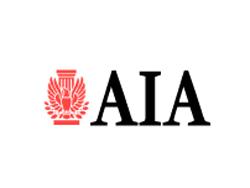AIA Seeks Input for 2010 Health Care Guidelines
- Home
- News
-
AIA Seeks Input for 2010 Health Care Guidelines
Washington, DC, May 31, 2007--The Health Guidelines Revision Committee (HGRC), with the support of the Facility Guidelines Institute (FGI) and the American Institute of Architects (AIA), seeks proposals from the public for the development of the 2010 edition of the Guidelines for Design and Construction of Health Care Facilities. More than forty states use the Guidelines document to regulate the design and construction of health care facilities. Architects, engineers, and health care professionals also use it on a daily basis as a guideline or reference.
The Guidelines recommend minimum program, space, and equipment needs for clinical and support areas of hospitals, ambulatory care facilities, rehabilitation facilities, and nursing and other long-term care facilities. The document also addresses minimum engineering design criteria for plumbing, electrical, and heating, ventilation, and air conditioning (HVAC) systems.
To keep the Guidelines current with changes in medical practice, medical technology, and the administration of health care, a new edition of the document is published every four or five years. The content of the book is updated through a consensus process that offers two opportunities for public participation—a proposal period for suggesting additions, deletions, or changes to the existing text and a comment period for recommending modifications to the committee-generated draft document. The HGRC is the consensus body that takes the information provided through this public process and develops it into the final language of the document.
HGRC Chairman Douglas Erickson, FASHE, observes, “The Guidelines belong to everyone working in health care. Therefore, all professionals from clinicians, administrators, support service providers, facility managers, and safety professionals to architects, design engineers, interior designers, contractors, and state and federal authorities having jurisdiction, as well as consumers of health care, need to be involved in writing proposals to improve the built environment for patients, staff, and visitors.”
At this time, all interested parties are invited to propose changes—either revisions or additions of new material—to any part of the 2006 edition of the Guidelines. Later in the revision process, the public will only be able to comment on proposed changes. This is the only opportunity to propose changes to any portion of the text.
The public proposal period will extend from May 1 to September 30, 2007. The HGRC will consider all proposed revisions and additions for inclusion in the next edition of the Guidelines, to be published in 2010.
“The Guidelines revision process provides opportunities for simplifying language to increase clarity, as well as for updating the document to reflect advancements in technology and changes in medical practice,” said HGRC Chairman Emeritus Joseph Sprague, FAIA, FACHA, FHFI.
During the current revision cycle, the HGRC is addressing patient- and staff-related building design and construction issues such as:
• Use of patient lift devices
• Imaging technologies used in operating rooms
• Bariatric accommodations
• Sound design and vibration in health care environments
• Single-bed rooms beyond medical/surgical and obstetric facilities
• Environment of care
• Infection control
• Health care facility engineering
Sections of the book scheduled for updating include the chapter on small hospitals (new in the 2006 edition of the Guidelines) and sections on imaging, emergency, obstetric, and psychiatric facilities in both the hospital and ambulatory care parts of the book. As follow-up to the expansion of the outpatient facility material in the 2006 edition, chapters on freestanding urgent care, office surgical, renal dialysis, and endoscopy facilities, among others, will be carefully reviewed.
Any member of the public may propose changes on these topics or any others by visiting the FGI Web site at www.fgi-guidelines.org. The “Changes to Guidelines” link will lead visitors to the “Proposals and Comments” page, where they can register to make proposals. Each proposal must be accompanied by a justification or rationale explaining why it should be considered. Registered users of the proposal site will be able to view proposals made by others, as well.
Following the period for making proposals, the HGRC will convene to consider all proposals that have been received. A report capturing the results of this meeting will record whether proposals are revised or rejected, including the committee’s rationale for any changes or rejections. The result of this meeting will be a draft 2010 edition of the Guidelines.
The second public opportunity to participate in the Guidelines revision process will come with publication of the draft 2010 edition and the report showing how the proposals were addressed. A public comment period will be held from May 15 to September 30, 2008, during which any member of the public may submit written comments on any proposed change to the 2006 edition. Comments may be made by anyone, in writing (preferably using the proposal and comment page of the FGI Web site), and must include justification and contact information. The HGRC will convene another meeting to address all comments received. Subsequently, the final draft of the 2010 edition of the Guidelines for Design and Construction of Health Care Facilities will be available for limited public access before publication. The HGRC will review the final manuscript and vote on whether to accept it. Once the balloting has been completed, the AIA will publish the 2010 edition.
Related Topics:The American Institute of Architects
